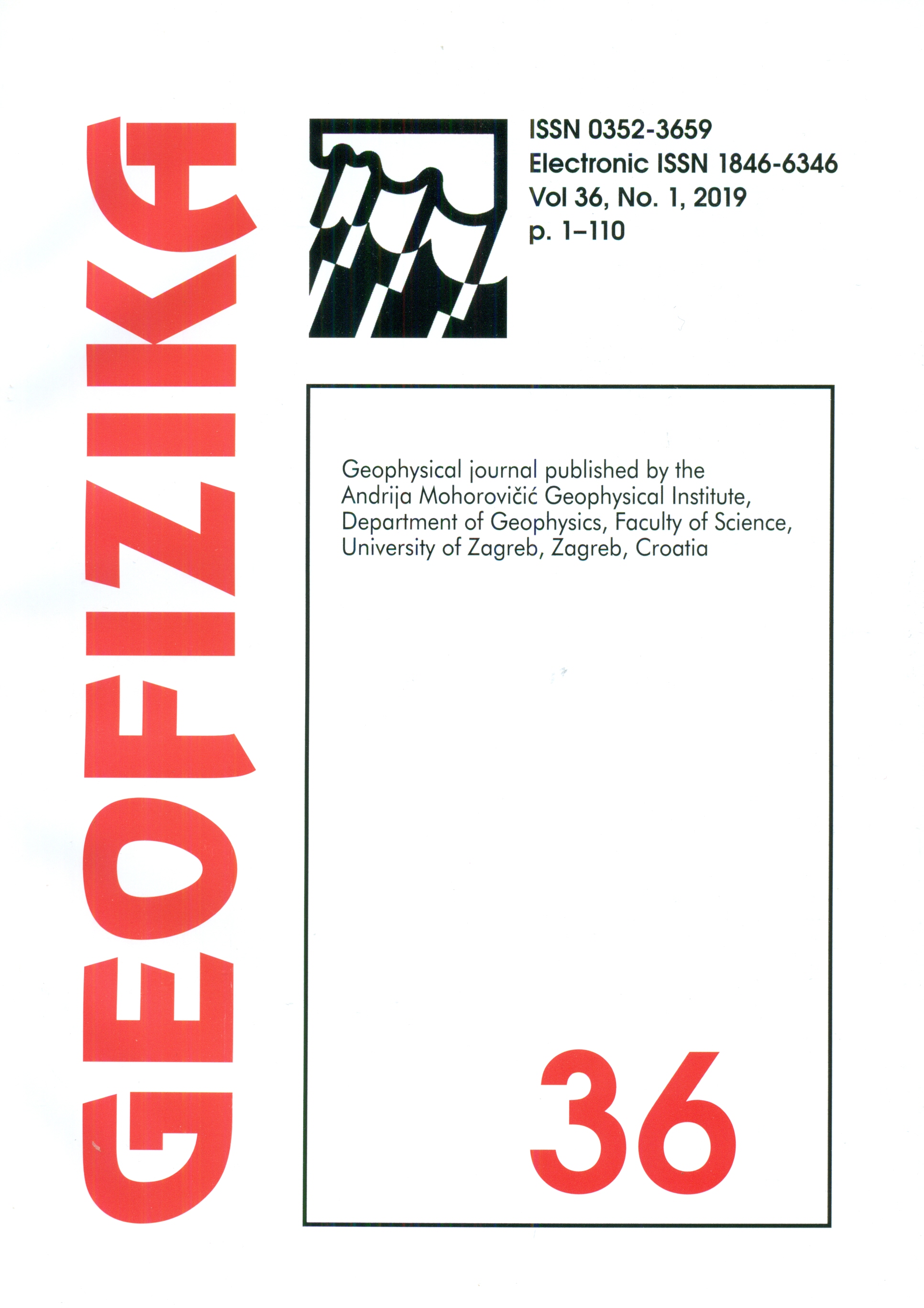Monitoring geomagnetic information in the territory of Croatia
DOI:
https://doi.org/10.15233/gfz.2019.36.3Keywords:
declination, annual variation of declination, reduction, geomagnetic information modelAbstract
In orientation and navigation using compass, reliable map's marginal information of Earth's magnetic field declination and its annual variation, namely geomagnetic information (GI), is crucial. Monitoring geomagnetic information means observing declination and its annual variation and checking the reliability of the actual GI model. A typical way of monitoring GI across a national territory involves conducting periodic geomagnetic network surveys to assess and update the model. The objective of the paper was to investigate improving the GI model reliability when an earlier model's error was raised to standard accuracy, and repeat station network surveys were not yet completed. A series of processing steps in modelling were revised to preserve the original data reliability. The partial 2008.5, 2009.5 and 2010.5 declination solutions were directly reduced to epoch 2015.0, and then to 2016.0, using the IGRF-12 model. The next step was to use 2016 and 2017 quiet daily declination means to estimate corresponding annual variations at surrounding observatories and repeat stations. Normal declination annual variation models were then built for further reductions to epoch 2017.0, and 2018.0, and for forward extrapolations. The quiet days observatory data were analysed to estimate the effect of the input time series length and linear extrapolated time span on forward extrapolation error. Thus, the reliability decline of the initial GI model slowed down in the sequence of models presented. The final GI2018v2 model, valid for 2018.0-2019.0, proved reliable in comparison to the repeat station declination observations of 2018.
Downloads
Published
Issue
Section
License
Copyright (c) 2021 Geofizika journal

This work is licensed under a Creative Commons Attribution-NonCommercial 4.0 International License.

